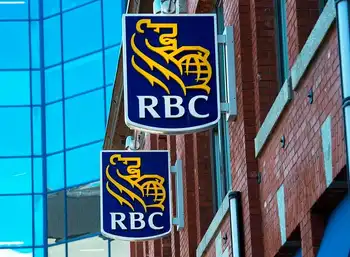India's first national spot power exchange goes live
By Industrial Info Resources
Arc Flash Training CSA Z462 - Electrical Safety Essentials
Our customized live online or in‑person group training can be delivered to your staff at your location.

- Live Online
- 6 hours Instructor-led
- Group Training Available
Market clearing prices ranged between (US) 16 cents per kilowatt-hours (kWh) and 20 cents per kWh. Clients based in Karnataka, Madhya Pradesh, Maharashtra, Tripura and West Bengal participated on the first day. More than 50 users and members have been identified to take part in Phase I of the operations at IEX.
IEX will function as a delivery-based spot exchange in which producers of electricity and distribution licensees can trade for small quantities of electric power and short periods of time without additional overloads. During the bid call period from 10 a.m. to noon, prospective buyers and sellers will submit bids and offers for hourly contracts for the next day.
The price of electricity will be determined by actual demand and supply on the basis of bids and offers placed during transaction hours, and matched trades will be settled at a uniform market clearing price. Transactions will be settled with actual delivery of electricity.
Power Grid Corporation of India Limited is responsible for scheduling and transmission of electricity through regional grids that form the interstate transmission system. IEX will also act as the counterparty for all settlements, thereby eliminating counterparty risk and guaranteeing security of payments.
By providing a common transparent platform for buyers and sellers of power, IEX will be instrumental in establishing an equilibrium price based on the intersection of demand and supply. The exchange will consider the nationwide mismatch in demand and supply to minimize price risks. The platform is targeted at encouraging power companies to develop additional merchant power capacities and attracting investments in the power sector.
The 100% neutral platform is open for membership to all power producers and traders dealing on behalf of potential users. IEX brings in transparency of trade, efficiency of cost, management of price risk, promotion of effective capacity utilization and increase in surplus power generation. It is a significant step in the power sector reforms being undertaken by the government.
IEX had received approval from the Central Electricity Regulatory Commission (CERC) in August 2007. It has been developed and promoted by Financial Technologies India Limited (Mumbai), the parent company of the Multi Commodities Exchange, and PTC India Limited (New Delhi), formerly Power Trading Corporation of India Limited. Financial Technologies developed the trading platform with NASDAQ OMX Group Incorporated, one of the world's largest exchange companies.
It has also partnered with OMX Technology, a part of the NASDAQ OMX Group, to provide technology support to IEX. Key stakeholders of the exchange include Tata Power, state-owned Rural Electrification Corporation Limited (New Delhi), Reliance Energy Limited, Lanco Infratech Limited, Infrastructure Development Finance Company and the Adani Group. In May, CERC gave its consent to a joint proposal from the National Commodities and Exchange Derivatives Exchange and the National Stock Exchange to set up Power Exchange India Limited, the country's second power exchange. It will give a final approval after the exchange has framed its rules and regulations for trading electricity.
Power Exchange India has an initial authorized capital of $6.25 million, which could be further enhanced. It will undertake scheduled, day-ahead power trading. The National Load Dispatch Center will clear all settled trades by undertaking scheduling and transmission of power, subject to availability of capacity.
The exchange will compensate the center for transmission and operation costs but will recover the cost of transmission losses from buyers and sellers trading on the exchange. National Thermal Power Corporation is also planning to establish a separate entity that will function as a power exchange, making it the third such exchange in the country.
CERC is looking to establish power exchanges in the country as market-based entities that will provide price discovery and management of price risk to all the stakeholders. There were initial objections to the emergence of several power exchanges in the country on the grounds that multiple exchanges could trigger market manipulations instead of providing competitive pricing. But CERC has rebuffed these objections and has also mandated that the exchanges be self-regulated to prevent malpractices like price manipulation.











